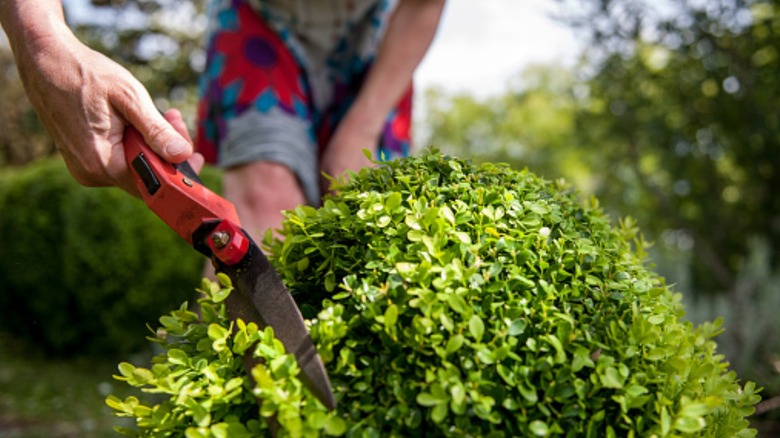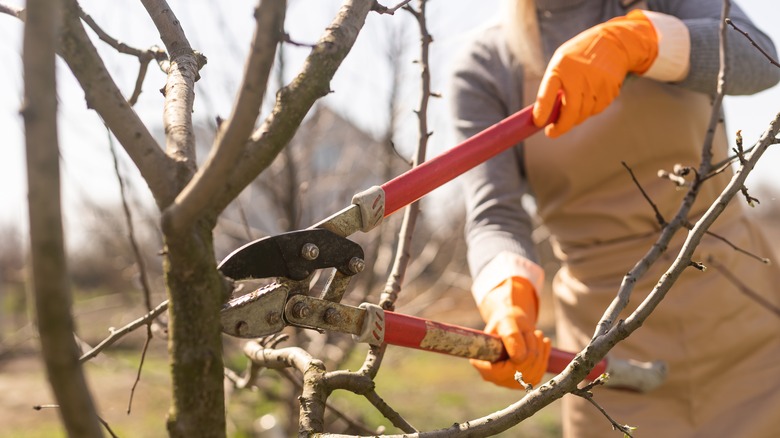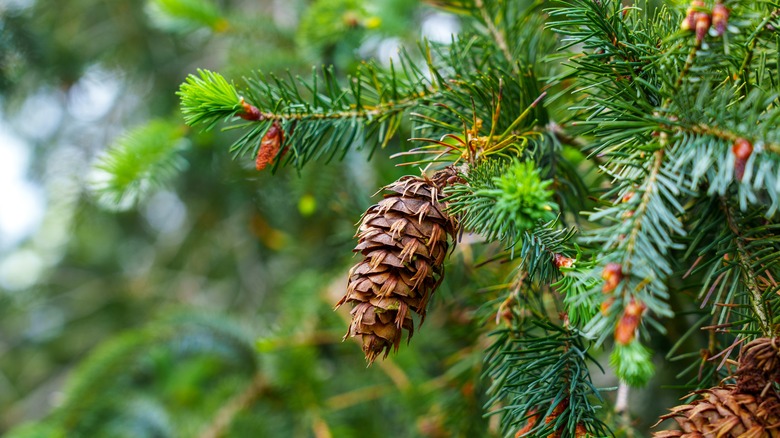Why November Might Be Best Time To Trim Your Trees And Shrubs
Depending on where you live and the type of shrubs and trees on your property, November can be a great time for pruning. In many regions, late fall is a time when various trees shed their leaves and begin to enter dormancy. While not all shrubs and trees should be trimmed at this time of year, deciduous varieties are plants you should be pruning in the fall, particularly later in the season. Pruning during November can also make the job easier, due to the increased visibility. With all the leaves off the branches, you'll easily be able to tell which parts of the tree are dying or diseased and need to be removed.
Additionally, you won't need to worry about bugs or diseases harming your tree after it's trimmed, since most are gone by the time it's cold. In some cases, pruning at this time can stave off certain fungi and diseases, making it even more beneficial. Getting your garden work done before it becomes bitter outside would also be more pleasant; however, before you get to cutting, it's crucial to ensure your shrubs and trees are types that should be pruned in late fall or winter and that the plants have gone dormant.
What shrubs and trees to trim in November
While essentially all deciduous plants can be trimmed in the late fall, this is especially important for oaks and forgetting to prune these trees could be a big mistake. By pruning your oaks in November, you can help to protect your trees from oak wilt, which is caused by fungus. Horse chestnuts, maples, and alder trees can benefit from a late fall trimming as well. Though some fruit trees, like pear and apple trees, do better when pruned in late fall, other types, such as plum and peach trees, can suffer if they're trimmed when dormant. This is because stone fruit trees are more susceptible to silver leaf disease during dormancy.
Along with fruit trees, bushes like gooseberry, blueberries, and blackcurrants can also be snipped in late fall. Additionally, landscaping shrubs that have become overgrown or misshapen won't mind a pruning in the late fall either. If you're unsure what type of shrub or tree you're dealing with or if you don't know if November is the best time in your region, contacting a local university extension service can help.
What not to prune in the late fall
While many trees and shrubs that enter dormancy can be trimmed in November, there are a variety of plants you shouldn't be pruning in the fall. In general, evergreens should never be cut back in the late fall. When harsh winter weather arrives, evergreen shrubs and trees that have recently been pruned are more likely to be damaged.
While rose bushes can be slightly pruned between February and March, most flowering shrubs should be trimmed in mid-spring. Since the buds that produce those flowers are on the branches in fall, pruning could result in less flowers next season. Rhododendrons, certain hydrangea varieties, and lilacs shouldn't be trimmed in November, as you'll likely cut off the beautiful flowers waiting to blossom. It's also a good idea to wait until spring to prune formal hedges. For those that live in warmer climates where trees don't go dormant in November, you may be able to trim your trees and shrubs all year, or you may need to wait until later in the winter.


